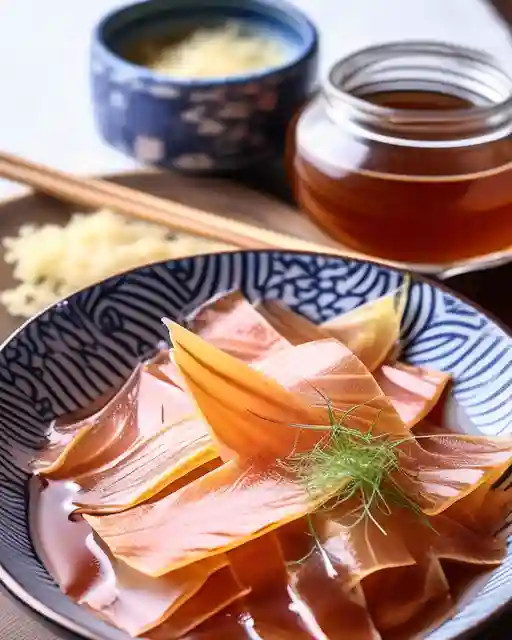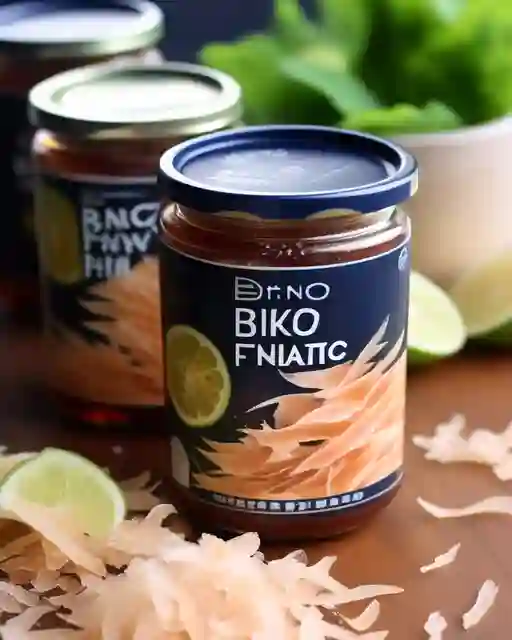How Do You Use Bonito Flakes in Cooking?
Updated: 27 Feb 2024
116

Flaky, savory, smoky bonito flakes are like culinary magic dust. How do you use bonito flakes? Bonito flakes thin, dried, and smoked flakes made from bonito fish add a rich, savory umami flavor to many Japanese and Asian dishes.
Though they have a fishy aroma, bonito flakes have a surprisingly smoky and meaty taste profile. While they are extremely popular in Japanese cuisine, bonito flakes can be used to enhance the flavors of many other Asian dishes or even some Western recipes.
In this beginner’s guide to cooking with bonito flakes, I’ll teach you all about what bonito flakes are, where to find them, popular dishes they are used in, proper storage methods, useful substitutions, and some easy recipe ideas to inspire you to start cooking with this magical mystery ingredient!
Whether you’re already a fan of Japanese cuisine or simply want to experiment with unique Asian flavors, learning some simple ways to add bonito flakes to your cooking will impress your family and friends.
Table of Contents
How do you use bonito flakes?

Bonito flakes add rich umami flavor as a tasty topping, mix-in, or stock ingredient in lots of Asian recipes. One of the most common ways to use them is to make dashi stock. To do this, you simply mix bonito flakes with dried kelp in hot water for 5 minutes before straining out the flakes.
You’re left with the savory Japanese dashi broth to use for miso soup, ramen, stir-fries, and more. You can also sprinkle the bonito flakes onto plain white rice. Mix with some soy sauce, sesame seeds, and scallions for easy chazuke – a tasty Japanese comfort food. For furikake rice seasoning, grind bonito flakes in a blender with dried seaweed, sugar, salt, and sesame seeds for a crispy rice topping.
Or keep it simple by tossing the flakes over steamed veggies, noodles dishes, fried rice, grilled fish, or meat for instant extra flavor. They bring a rich savory flavor without needing lots of sodium or fat. With some bonito flake inspiration, you’ll discover it’s tasty and easy to cook Japanese style!
Buying Bonito Flakes
1. Where to Find Bonito Flakes
You can find bonito flakes at most Asian supermarkets or Japanese grocery stores. Check the aisle where they sell Japanese or Korean ingredients. Crunchy, light brown bonito flakes are usually stocked in small plastic bags or glass jars near the seaweed and dried mushrooms. If you don’t have an Asian market nearby, search online for Japanese or Korean grocery delivery services. Several mail-order sites sell Japanese bonito flakes worldwide. Buying them online can be pricier but worth it for the authentic imported flavor.
2. Choosing High-Quality Bonito Flakes
So how do you pick out good bonito flakes? Start by checking the color and texture. Quality bonito is light tan or brown with a shaved texture that crunches easily between your fingers. The flakes should smell smoky, meaty, and ocean-like but not overly fishy or rancid. Also, inspect the consistency – you want flakes that are dry and separated, not oily clumps.
Finally, go for Japanese brands over cheaper alternatives for the best bonito taste and aroma. With so many uses from furikake to dashi soup stock, it’s worth investing in premium bonito flakes!
Uses for Bonito Flakes
1. Soups
Bonito flakes are often used to make dashi, the savory Japanese broth used for miso soup, ramen, udon, and more—just quickly steep bonito with kelp to make this flavor base.
2. Rice Dishes
Chazuke is made by pouring green tea or dashi over white rice and then topping it off with bonito flakes for a simple Japanese comfort meal.
3. Salads & Vegetables
Use bonito flakes to add smoky flavor to salads with spinach, cucumbers, or wakame seaweed. Also delicious sprinkled over hot veggies like green beans.
4. Meat & Fish
Bonito flakes make great umami-rich toppings for grilled fish, chicken, beef, and pork dishes. The smokiness enhances the flavors.
5. Snacks
Popular Japanese rice seasoning furikake often contains bonito flakes for crunch. Bonito flakes also fill onigiri rice balls for an easy snack.
Recipes with Bonito Flakes
1. Dashi (Bonito & Kelp Stock)

Dashi is a fundamental Japanese stock made by steeping bonito flakes and dried kelp. To make dashi, place 4 cups of water, 5-6 bonito flakes, and a 4-inch piece of kombu seaweed in a pot. Slowly bring to a simmer then turn off heat. After 5 minutes, strain out the bonito flakes and kelp. Now you have savory dashi broth ready for miso soup, ramen, stir-fries, and more! The bonito gives dashi its rich, meaty flavor while the kelp provides mineral taste and thickness. Adjust bonito flakes to control the smokiness.
2. Miso Soup with Bonito Flakes
Transform dashi stock into hearty miso soup with just a few additions. Softened tofu, wakame seaweed, and scallions are classic mix-ins. Bring 4 cups of dashi plus white or red miso paste to a gentle simmer. Add diced firm tofu, rehydrated wakame seaweed, and 2 thinly sliced scallions. Simmer for 1 minute without boiling to retain health benefits. Pour hot miso soup into bowls then top with extra bonito flakes, a dash of chili oil, or soy sauce if desired. The bonito flakes infuse extra savory flavor with their smoky aroma.
3. Okaka (Bonito Rice Topping)

Okaka quickly turns plain rice into a flavorful Japanese-style meal. Heat 1-2 tablespoons vegetable oil in a small skillet over high heat. Add 2-3 ounces bonito flakes and stir constantly for 1 minute until lightly browned and crispy. Immediately remove from heat and mix the hot, crunchy bonito flakes into freshly cooked white rice. Combine with soy sauce, pickled vegetables, and sesame seeds for extra tang and texture.
Storing Your Bonito Flakes
1. Keeping Bonito Flakes Fresh
Bonito flakes can last over a year when stored properly. But after opening, it’s best to use them within 2-3 months before the oils start oxidizing. Heat, air exposure, and humidity are enemies of freshness causing quicker flavor loss.
2. Ideal Storage Containers
Store bonito flakes at room temperature in an airtight container. Glass jars, resealable plastic bags, or tightly sealed tins work well. Just ensure no air space remains inside once sealed to prevent moisture absorption or aroma contamination from other foods.
3. Shelf Life Factors
Unopened, bonito flakes typically last 6 months to 1 year from the packaged date at room temperature. Refrigeration can extend shelf life slightly longer. Check for expiry dates and inspect overall quality once opened. Discard any discolored gray flakes, slimy texture, or rancid smell – these indicate spoiled bonito unfit for eating. With proper storage care, your bonito flakes will stay fresh for adding smoky magic to recipes!
Handy Tips and Substitutions
Buying Dashi as a Shortcut
Don’t have time to make dashi stock from scratch? Look for instant dashi powder or Hondashi dashi soup base sold in jars at Asian grocery stores. Just add water and bonito flakes for a quick homemade flavor.
Possible Bonito Flake Substitutes
If you can’t find bonito flakes, try using these alternatives:
- Smoked tuna flakes
- Smoked salmon flakes
- Anchovy paste or fillets
- Dried shrimp or tiny fish While they won’t mimic the exact bonito taste, these fishy ingredients can inject a similar savory umami punch. Smoked tuna and salmon tend to be the closest flavor approximations when you’re in a bonito flake pinch.
Final Thoughts
Now that you’re an expert on those magical umami flakes, it’s time to start cooking! Bonito flakes are easy to find and add instant savory flavor to so many dishes. Make nutritious dashi broth for homemade Japanese recipes or keep it simple by just sprinkling them onto veggies, noodles, rice, and more.
Start with user-friendly toppings then work up to seasoning blends like furikake rice topping as your bonito skills improve. With proper storage, your flakes can transform your cooking for over a year. So head to the Asian market or order some Japanese bonito online today.
Get ready to become a bonito flake wizard with this beginner’s guide! Your tastebuds will thank you as you discover rich new dimensions of savory umami flavor in easy yet delicious recipes.
FAQs
How can I cook with bonito flakes?
You can cook with bonito flakes by adding them to soups, sprinkling them on rice dishes, mixing them into furikake, or simply using them as a topping for vegetables, noodles, fish, and meat. They add tons of savory umami flavor.
What happens if you add bonito flakes to hot liquid?
The bonito flakes will soften and begin to dissolve when added directly to hot soups and broths, releasing more of their smoky, meaty taste. After a few minutes, they break down into smaller pieces.
How long will my opened bonito flakes stay fresh and usable?
If stored properly in an airtight container at room temperature, opened bonito flakes will stay fresh for 2-3 months before losing their signature aroma and flavor.
What kinds of recipes and dishes use bonito flakes?
Bonito flakes are very popular in Japanese and Asian recipes like dashi broth, miso soup, chazuke rice bowls, furikake seasoning, okaka toppings, ramen, rice balls, hot pots, and more.
What’s the tastiest way to enjoy bonito flakes?
Many people love bonito flakes sprinkled freshly over a steaming bowl of white rice or hot miso soup for maximum flavor and aroma. Their smoky savoriness shines through.
How do you typically eat and serve bonito flakes?
In Japanese cuisine, bonito flakes are usually served as a topping or mix-in to complete a dish. Their delicate nature is best enjoyed with soft foods like tofu, rice, and omelets rather than eaten plain.
Please Write Your Comments